 | Name: Joan Wilson
Overview: In 1954, Joan Wilson was appointed as a Diabetes Specialist Health Visitor by Dr. Joan Walker of Leicester Royal Infirmary, who believed that patients would benefit from being ‘taught how to live their lives at home`. As a fully trained nurse, she could claim to be one of the UK`s earliest Diabetic Specialist Nurses. She visited homes and gave patients her own home phone number; visited schools and workplaces; liaised with district nurses and GPs and provided patient education at the Infirmary clinics. She was involved in consultant-led clinics in smaller towns and in helping GPs to set up clinics.
Hits=6 |
|
| 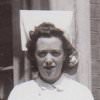 | Name: Joan Jones
Overview: Joan Jones trained as a nurse during the Second World War. She first encountered diabetes during fever training at an isolation hospital in 1940 and then among war casualties in London. When she was midwifery sister in Dulwich in the early 1950s, mothers with diabetes had been warned to avoid pregnancy and expected their babies to be stillborn; but at Birmingham Maternity Hospital from 1955 - where a diabetic clinic was run jointly by John Malins and obstetrician Samuel Davidson - most babies lived. As a district sister in Coleshill from 1963-82, she helped many elderly patients with diabetes.
Hits=6 |
|
|  | Name: Gillian McGuinness
Overview: Gillian McGuinness studied human physiology at Manchester University before doing an eighteen-month Diploma in Dietetics at Hollings College in 1977, when there was a ‘dire shortage of dietitians`. She worked in NHS and private hospitals in Manchester and Bristol and then at Birmingham Children`s Hospital from 1990. She remembers that in the late 1970s, children with diabetes didn`t always grow very well or get full employment opportunities or take for granted that they would have children, whereas now she expects them to live long healthy lives and be able to achieve all the same things as people without diabetes.
Hits=3 |
|
| 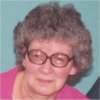 | Name: Betty
Overview: Betty`s first child, Nick, was the son of an American soldier who left England before Nick`s birth in December 1944. In 1961, Nick joined the RAF for 12 years and then returned home, aged 30, to live with his mother and work as a taxi driver. He liked sweet food before he developed diabetes around the age of 40 and found it hard at first to change his diet and give up smoking. He stopped taxi-driving when he was 54 because of failing eyesight and poor health and was on dialysis for about 3 years before he died in 2006.
Hits=3 |
|
|
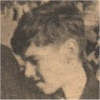 | Name: Fred
Overview: Fred`s family was poor and food was rationed in his early years: he remembers that a Mars bar was cut into slices to last 4 or 5 days! After diagnosis, he was told that `I had to control the diabetes rather than the diabetes control me` and has tried to follow that advice ever since. He lost his sight in 1978 and his second wife left him because she couldn`t cope. He began a successful business making garden furniture and now lives with his third wife, who is also blind.
Hits=2 |
|
| 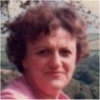 | Name: June Hill
Overview: June Hill had never eaten much sweet food and had always had plenty of exercise so her diagnosis brought little change and had no effect on her career as a teacher and then a nurse. She went on tablets in 1983, and was put on insulin in 1995, when she had a serious illness unconnected with diabetes. She took no interest in her own diabetes for many years until her diabetic mother became housebound. Then she began to inform herself about long-term implications. She is very fit and is enjoying her retirement.
There is also an interview with June Hill`s husband, Tony Hill
Hits=2 |
|
|
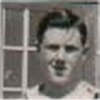 | Name: Ron Craythorne
Overview: Ron Craythorne worked all his life in the family business of carpentry and joinery but, when he retired, there was no-one to take over, so now he and his wife give shows for charity, showing people round the old workshop and selling the products of his woodturning. (He carved and painted the wooden fruit and bowls shown in his photo.) He has played team sports all his life and diabetes has caused him few problems. However, he knows of the problems it can cause, from members of the diabetic group he founded several years ago.
Hits=2 |
|
|  | Name: Peter Swift
Overview: Dr Peter Swift was Consultant Paediatrician at Leicester Royal Infirmary from 1979 to 2006. He has published widely on childhood diabetes and produced guidelines for the International Society for Paediatric and Adolescent Diabetes. In a national survey of paediatric diabetes services in 1988, he found many children were not being seen in specialist clinics; few clinics were using HbA1c tests, and they lacked specialist nurses, dietitians and psychological help. By 2004, almost all children were seen in specialist clinics, with more specialist nurses. He still thinks more specialist nurses and dietitians are needed and many more mental health workers.
Hits=2 |
|
|
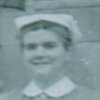 | Name: Elizabeth Wilson
Overview: Elizabeth Wilson trained at the Edinburgh College of Domestic Science and then taught for six years at a school in Leith. In 1952, she heard that dietetics was `an up-and-coming profession` and embarked on an eighteen-month training course in the School of Dietetics at Edinburgh Royal Infirmary. From 1954 to 1958 she was a ‘Social Dietitian`, working in the Infirmary`s diabetic clinics in the mornings and doing home visits in the afternoons. She was the Infirmary`s Chief Dietitian from 1964 to 1979, before becoming District Dietitian, responsible for six hospitals including the Infirmary, from 1979 until she retired in 1985.
Hits=2 |
|
| 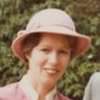 | Name: Mo Linton
Overview: Mo Linton`s husband, Douglas, was born in 1926 and diagnosed with diabetes aged three. He kept his diabetes secret and became a racing driver, ensuring that his urine tests would pass medicals and keeping his blood sugars high during races. Mo met him in early 1967, when he was 40 and she was 22, but didn`t discover he was diabetic until four years later. They lived together from 1973 and married in 1981. She found secrecy difficult and they both relaxed when everyone learnt he had diabetes after a newspaper reported his opening of a new diabetes centre in 1998.
Hits=2 |
|
|
 | Name: Husne Ara
Overview: Husne Ara`s father was diagnosed with diabetes in Bangladesh in 1963. Although she was only 10, she gave her father his injections and became interested in diabetes. She came to England to get married when she was 17 in 1970. In 1990 she got a job as Diabetes Link Worker at the Royal London Hospital, to interpret for Bangladeshi patients in Tower Hamlets, translate information for them and educate her colleagues about cultural differences. She became a Diabetes Lay Educator in 2005 and runs courses for Bangladeshi people with Type 2 diabetes. She was diagnosed with diabetes herself in 2006.
Hits=2 |
|
|  | Name: Philip Farrant
Overview: Dr. Philip Farrant was a general physician at West Hill Hospital in Dartford from 1963 to 1988. He was never officially designated as having a ‘special interest in diabetes`, but he ran the diabetic clinics and published on diabetes. In 1976, he encouraged a patient to found a local branch of the British Diabetic Association, which raised money for equipment and offered support to patients. In 1972, he established a postgraduate medical centre at Joyce Green Hospital, which moved to the new Darent Valley Hospital in 2000 and was re-named the Philip Farrant Education Centre.
Hits=1 |
|
|
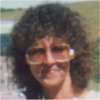 | Name: Mary Potter
Overview: Mary Potter`s daughter, Joanne, developed symptoms of diabetes in 1978, when she was five. Her GP refused to believe she had diabetes and Joanne nearly died. This traumatic beginning left a legacy of anxiety and anger. Mary noticed that another mother of a diabetic child was more laid-back than she was. She also noticed that when a niece was diagnosed around ten years later, there was much more specialist help and information available. Mary still sometimes accompanies Joanne to diabetic clinics. Joanne hates clinic visits because she feels that doctors treat her like a child and make her feel guilty.
There are also interviews with Mary Potter`s daughter, Joanne Pinfield, and with Joanne`s husband, Nick Pinfield.
Hits=1 |
|
| 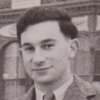 | Name: Harry Keen
Overview: From 1961, Harry Keen worked as physician, investigator and teacher at Guy`s Hospital Medical School, and was Professor of Human Metabolism from 1971 until1990. When interviewed in 2006, he was still working at Guy`s as Professor and Consultant Physician Emeritus. He has been Hon Professor of Medicine at Warwick University since 2005. His work has included major population studies and clinical trials, laboratory studies, origination of the category of IGT, first demonstration of microalbuminuria, continuous subcutaneous insulin infusion, pioneering of Diabetes Centres and leadership of the St. Vincent Declaration. He has held office in many British and international organisations
Hits=1 |
|
|
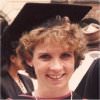 | Name: Veronica Wilkie
Overview: When Veronica Wilkie became a GP in Droitwich Spa in 1992, she was expected to specialise in gynaecology. Instead she chose to specialise in diabetes - `the best decision I made`. She eventually set up courses for GPs and practice nurses to gain a Certificate in Diabetes Care. Now her practice no longer needs to run a diabetes clinic – because patients can choose to see any one of four doctors and three nurses with the Certificate in Diabetes Care, at a time to suit them. She is also a Senior Clinical Teaching Fellow at the University of Warwick Medical School.
Hits=1 |
|
| 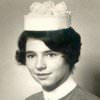 | Name: Mary MacKinnon
Overview: Mary MacKinnon was one of the earliest practice nurses, from 1980-85, and attended one of the earliest training courses, in 1983, for nurses wishing to specialise in diabetes. Since then, she has worked as a Diabetes Research Sister and Diabetes Service Co-ordinator in Sheffield, and in the late 1990s helped set up Primary Care Diabetes UK. She has lectured on diabetes care at the University of Warwick and was Director of Education for Warwick Diabetes Care from 2000-1. She has published throughout her career and now works as a freelance Diabetes Education Consultant. She diagnosed her own diabetes in 1999.
Hits=1 |
|
|
 | Name: Mushtaq
Overview: Mushtaq was in business until he gave up work, aged thirty, to look after his parents full-time. Both parents had Type 2 diabetes and they had managed well, until his mother developed Alzheimers and his father manic depression. He finds that mental illnesses and diabetes affect each other greatly, but he has difficulty in persuading specialists in these fields to consult each other. He earns far less than he did in business and does it for love, but wishes that the government could pay a little more, in recognition of how much money is saved by family members` full-time care.
There is also an interview with Mushtaq`s sister, Shanaz.
Hits=1 |
|
| 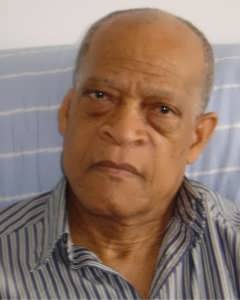 | Name: George Saunders
Overview: George Saunders was brought up in St.Kitts, worked for his father as a tailor, and came to England in 1958. Since recording this interview, he has received a lot of publicity, because his Birmingham workshop, where he worked as a tailor for nearly 30 years, has become part of a National Trust museum. After he was diagnosed, he was on tablets for about a year before changing to insulin. He is full of praise for medical staff, even though he ignores their advice when he thinks he knows best. He feels that his diabetes has caused him few problems.
Hits=1 |
|
|
 | Name: Shanaz
Overview: Shanaz works as Lead Nurse/ Diabetes Specialist Nurse on the UK Asian Diabetes Study, which is investigating the benefits of providing structured care, tailored to the needs of the South Asian community. Her father came to the UK from Pakistan in 1948 and was diagnosed with Type 2 diabetes in 1960. She has two older sisters who have both developed Type 2 diabetes in recent years. The experiences of her family and of her patients have convinced her that people with diabetes can live a long healthy life, provided that they adopt a healthy diet and take exercise.
There is also an interview with her brother Mushtaq.
Hits=1 |
|
|  | Name: Emma Cherry
Overview: By the time Emma Cherry was diagnosed in 1988, GPs were familiar with childhood diabetes; hospital children`s wards were used to dealing with it, and Emma remembers a wonderful diabetes specialist nurse who showed her how to inject herself, and later called at her home twice daily to supervise her early attempts. Her schools, university, and colleagues at work all accepted her without any fuss, and she has never been made to feel `different`. Injections and blood tests are such a routine part of her life that she wonders how she would cope with a cure!
There is also an interview with Emma`s mother, Zin Cherry.
Hits=1 |
|
|
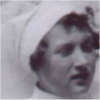 | Name: Monica Winn
Overview: Monica Winn was the only child of a naval officer and grand-daughter of a doctor who diagnosed her diabetes only 4 years after insulin was first manufactured in England. She nearly died of pneumonia; had bronchitis every winter; spent much time in bed and never attended school. Her parents were told she wouldn`t live beyond 14 and she was told that she wouldn`t have children. She had a daughter in 1945 and recorded this interview when she was nearly 86. She is very fit and copes well with slight memory loss after a series of mini-strokes.
Hits=1 |
|
|  | Name: Joe Needoff
Overview: : Dr. Joe Needoff was a GP in an old-established Black Country practice from 1951 to 1989. He had a few, mainly elderly, patients with diabetes, but issued very few prescriptions for insulin and never saw a young person with diabetes. At first he had no nurse to help him, so did urine tests himself and, when he needed a chaperone, he called on his wife or another patient. The waiting-room was often crowded, as there was no appointment system. He saw no increase in diabetes throughout his career and had no diabetic clinic: ‘there was no necessity for it.`
There is also an interview with another Black Country GP, from one generation later, Dr. Richard Gee.
Hits=1 |
|
|
 | Name: Zin Cherry
Overview: Zin`s daughter, Emma, was diagnosed with diabetes at the age of 10, in 1988. While Emma says that after the shock of diagnosis her parents were `really laid back,` Zin remembers a time of high anxiety. However, she managed to hide her worries from Emma and was supported for several years by a very reassuring Diabetes Specialist Nurse called Sally Strang. Emma is well and happy - and her mother`s only regret is that she sometimes spoilt her and didn`t pay enough attention to her sister`s feelings. Nowadays, Zin thinks that diabetes `doesn`t seem such a big deal at all`.
There is also an interview with Zin`s daughter, Emma .
Hits=1 |
|
|
| Search returned 44 matches |